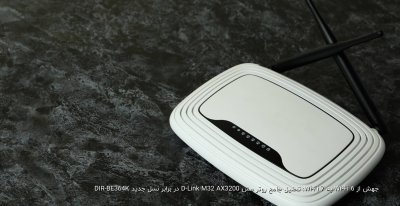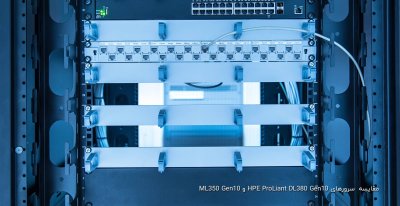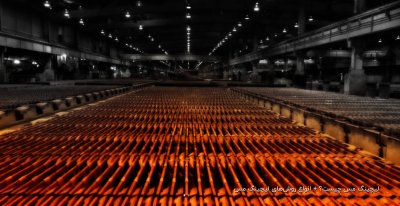Amin 4D
مدیر انجمن <A href="http://forum.majidonline.com/f
Blue Sky Studios completes ice-breaking VFX
for final frolic with Sid and Scrat.
CGSociety :: Production Focus
16 July 2009, by Renee Dunlop
Snow prints, rivers of lava, lava falls, exhaust, debris, bubbles, high viscous fluids, geysers, stink bombs, dust and steam. These are just a fraction of the effects needed for 'Ice Age: Dawn of the Dinosaurs'. Blue Skys’ VFX Supervisor Kirk Garfield faced an imposing list of FX and volumetrics for the third installment of Ice Age. But did he flinch? “I like being busy and being under the gun and when I’m not, I’m bored. I’m a masochist that way. I’m used to my schedule looking like triple booked meetings after every hour for the entire day.”
Making snow stick. © 2009 Twentieth Century Fox. All Rights Reserved. Photocredit: Blue Sky Studios.
© 2009 Twentieth Century Fox. All Rights Reserved. Photocredit: Blue Sky Studios.
Blue Sky was happy to oblige, upping the ante by adding several new tricks to their latest film. Snow gathering on fur, for example. “Before, they would leave the characters bare of snow. This time, they leveraged off the fur technology, placing particles along the roots of the fur anywhere from the roots to the tips to make it look like they were covered in snow.” But when asked what sequence demanded the most, Garfield chose the Mist Monster.
MIST MONSTER
Buck, a new character, has a habit of exaggerating his memories of the past. In one of his flashbacks, he climbs up a tall tree through a canopy of swirling clouds where he encounters a volumetric version of his nemesis, Rudy.
© 2009 Twentieth Century Fox. All Rights Reserved. Photocredit: Blue Sky Studios.
In the past, Blue Sky has used a volumetrics using a technology called Smog, where the user would cerate spheres in the shape desired and the FX team would make an isosurface from that shape and fill it with noise. “That worked OK in the past but it would break down pretty quickly; when those spheres separated from each other they would look like cotton balls. We couldn’t put much motion into it or reveal the method we used.”
For this movie they took advantage of Maya’s compressible fluids and set up all of the dust, snow powder, mist, and the entire sequence of the Mist Monster using what Blue Sky calls SmaugVox, smog in a voxel system. “We gained two things. One was with Mayas’ fluid system, we were able to run simulations. We made a series of tools to determine the contact between the geometry and the ground and packaged it for the FX TD’s so they could run sims using Mayas’ rendered feedback to see what it would look like, then exported the density and velocity information to bin files that we would convert into voxels for our proprietary software.”
Blue Sky never had a way to render the voxels in the proprietary software but in this film, the R&D department came up with a way of rendering the compressible fluids out of Maya in studio voxel space. “We ended up with great motion. Whether it was the stomp of a dino foot or Sid careening down a slope, we were able to use the Maya fluids to generate dynamic fluid behavior, including the mist monster sequence where we filled almost an ocean bed with clouds, than in Maya, filled up Rudy and emitted fluids from him.” It took some noodling from the FX TD’s and a lot of collaboration from the composting department and several months of work to pull it all off.
LIGHTING
There was a great deal of upfront development to make sure that the teams were able to produce what the director was looking for. To achieve that, the FX department worked closely with the lighting and compositing team, who added their own Nuke elements in order to marry the FX departments’ 3D volumetrics with the goal of filling in the background and empty spaces. This collaboration helped not to overburden the render farm or the lighters with too much information.
Lighter Haji Uesato elaborated on some of his challenges. “We did a lot of handshake work with FX. They did some beautiful volumetric mist elements for clouds, and we supplemented a lot of that with some 2D noise based, card based mist work. FX spent months generating effects for the mist monster that were very complicated to put together, but lighting-wise, because they were mostly 3D elements we were able to light them conventionally and boost them up in the comp to really sell them.”
However, some lighting hurdles come from unexpected places. “The challenge was that we had an entirely different world to deal with. The original characters were designed to be seen on ice so they were earth toned, browns and greens, oranges and yellow over whites and blues. When we got under ground in a very brown and red world, that was a very difficult challenge for us. It was complicated by the lushness of the environment.”
© 2009 Twentieth Century Fox. All Rights Reserved. Photocredit: Blue Sky Studios.;
© 2009 Twentieth Century Fox. All Rights Reserved. Photocredit: Blue Sky Studios.
© 2009 Twentieth Century Fox. All Rights Reserved. Photocredit: Blue Sky Studios.
Blue Sky features director Carlos Saldanha. photo: Jamie Midgeley.
© 2009 Twentieth Century Fox. All Rights Reserved. Photocredit: Blue Sky Studios.
BUCK
The introduction to Buck pays homage to the famous scene in Apocalypse Now when Martin Sheens’ character rises silently from the water, his fur (Buck, not Martin Sheen’s) soaked and plastered. “In the past,” said Garfield, “we haven’t actually been able to get the fur to look wet. We’ve had wet grooms for the fur, but there was never a good way to move a sheen or highlight texture through the fur, and put fluid effects on top of the fur, drips and things, to make it look right.” In this movie, Blue Sky took the time to develop better techniques, combining the best of both worlds of hand animated FX and procedural or simulation based effects.
Blue Sky found that neither using strictly procedural or simulation methods nor manual methods give the style that director Carlos Saldanha wanted, or the control or directability they needed, especially for a scene requiring the water to drip and run off in sheets, utilizing four water drip systems, each with a different resolution and noise water bump seamlessly integrated together. “We combined a lot of different techniques. We had one of our FX animators use a rig to make hand animated drips on his nose, over his lips, drips along the knife he’s holding in his teeth. Those were animated off the character and his props, and through the water."
"What we would do is take a pruned selection of those hand animated particles and apply them to a 2D fluid sim using Realflow's Realwave surfaces (Next Limit) which gave us control over the ripples made from the droplets” The fact that this wass a close-up shot meant the detail had to be high res and accurate, employing the use of secondary splashes too. “Because we combined hand animated FX with both procedural and simulated effects, we were able to really control it. After two or three iterations the director loved it. That was a nice way to work.”
© 2009 Twentieth Century Fox. All Rights Reserved. Photocredit: Blue Sky Studios.
SNOW PRINTS AND STINTS
When Garfield first started at Blue Sky as an FX TD, his tasks on the first Ice Age were “lots and lots of snow print shots.” They used a tedious process and involved running what they called a NURBS march that would capture the intersections of the ground plane and the geometry meant to leave prints by taking high contract grey-white texture maps, key light those maps and bring them into Shake, add detail, and export that version, then displace the surface. The entire setup could run a couple of days, an expensive process. “We knew, in this picture with a hundred-plus snow print shots, we needed a better method.”
The Blue Sky Research and Technology team came up with their own footprint technology called bssFootprint, a plugin for Maya which allowed the artist to see instant feedback of the objects creating the prints right on the screen using smooth shading, etc, by deforming the geometry frame by frame. The process went from a couple of days per shot to a couple of hours. If the director felt the front of the berm was too high or two sharp, instead of going back and re-simulate the footprints, they used the Maya sculpting tools combined with another plugin from R&D to sculpt the prints frame by frame to finesse the look. “It really streamlined the process for us. No longer were we afraid of footprints! Now we welcome it whenever we see it in storyboards!”
THE MELT DOWN
On Ice Age: Dawn of the Dinosaurs, it was supposed to be a non-effects movie and it ended up being about two times the amount of FX per TD than Ice Age: The Meltdown which used 26 artists. On Dawn of the Dinosaurs, they had a grand total of twelve. “The way things work here,” said Garfield “we leave a very short amount of time between final layout and beginning of lighting, and they like to have our FX in there for the lighting department. But the reality is, unless the effect takes less than five days it’s just not going to happen, so we use these gorilla tactics where we’ll get in to bid things early, the team gets in there early while the animators are just starting to work, we’ll set up automated scripts so when it finally comes through, it can be ready at 75%. If we didn’t work that way there would be no way we could have had as many FX in the film as we did. We had to work smart and work early, and always show how much movie they can have for what time is left and how much staff we have.”
Did that scare Garfield away? “I’m a big spread-head. I already have the next movie completely estimated. I get in there as early as script and story and stats and update my bids all the way through every step of the pipe, mostly because FX are so dependant on up and down stream departments. If you don’t raise flags early enough you are going to wind up with something that is just not going to be able to be reproduced.”
Related links:
Ice Age: Dawn of the Dinosaurs
Blue Sky
Kirk Garfield
Maya
Next Limit Technologies
Realflow









منبع: http://features.cgsociety.org/story_custom.php?story_id=5171
for final frolic with Sid and Scrat.
CGSociety :: Production Focus
16 July 2009, by Renee Dunlop
Snow prints, rivers of lava, lava falls, exhaust, debris, bubbles, high viscous fluids, geysers, stink bombs, dust and steam. These are just a fraction of the effects needed for 'Ice Age: Dawn of the Dinosaurs'. Blue Skys’ VFX Supervisor Kirk Garfield faced an imposing list of FX and volumetrics for the third installment of Ice Age. But did he flinch? “I like being busy and being under the gun and when I’m not, I’m bored. I’m a masochist that way. I’m used to my schedule looking like triple booked meetings after every hour for the entire day.”
Making snow stick. © 2009 Twentieth Century Fox. All Rights Reserved. Photocredit: Blue Sky Studios.
© 2009 Twentieth Century Fox. All Rights Reserved. Photocredit: Blue Sky Studios.
Blue Sky was happy to oblige, upping the ante by adding several new tricks to their latest film. Snow gathering on fur, for example. “Before, they would leave the characters bare of snow. This time, they leveraged off the fur technology, placing particles along the roots of the fur anywhere from the roots to the tips to make it look like they were covered in snow.” But when asked what sequence demanded the most, Garfield chose the Mist Monster.
MIST MONSTER
Buck, a new character, has a habit of exaggerating his memories of the past. In one of his flashbacks, he climbs up a tall tree through a canopy of swirling clouds where he encounters a volumetric version of his nemesis, Rudy.
© 2009 Twentieth Century Fox. All Rights Reserved. Photocredit: Blue Sky Studios.
In the past, Blue Sky has used a volumetrics using a technology called Smog, where the user would cerate spheres in the shape desired and the FX team would make an isosurface from that shape and fill it with noise. “That worked OK in the past but it would break down pretty quickly; when those spheres separated from each other they would look like cotton balls. We couldn’t put much motion into it or reveal the method we used.”
For this movie they took advantage of Maya’s compressible fluids and set up all of the dust, snow powder, mist, and the entire sequence of the Mist Monster using what Blue Sky calls SmaugVox, smog in a voxel system. “We gained two things. One was with Mayas’ fluid system, we were able to run simulations. We made a series of tools to determine the contact between the geometry and the ground and packaged it for the FX TD’s so they could run sims using Mayas’ rendered feedback to see what it would look like, then exported the density and velocity information to bin files that we would convert into voxels for our proprietary software.”
Blue Sky never had a way to render the voxels in the proprietary software but in this film, the R&D department came up with a way of rendering the compressible fluids out of Maya in studio voxel space. “We ended up with great motion. Whether it was the stomp of a dino foot or Sid careening down a slope, we were able to use the Maya fluids to generate dynamic fluid behavior, including the mist monster sequence where we filled almost an ocean bed with clouds, than in Maya, filled up Rudy and emitted fluids from him.” It took some noodling from the FX TD’s and a lot of collaboration from the composting department and several months of work to pull it all off.
LIGHTING
There was a great deal of upfront development to make sure that the teams were able to produce what the director was looking for. To achieve that, the FX department worked closely with the lighting and compositing team, who added their own Nuke elements in order to marry the FX departments’ 3D volumetrics with the goal of filling in the background and empty spaces. This collaboration helped not to overburden the render farm or the lighters with too much information.
Lighter Haji Uesato elaborated on some of his challenges. “We did a lot of handshake work with FX. They did some beautiful volumetric mist elements for clouds, and we supplemented a lot of that with some 2D noise based, card based mist work. FX spent months generating effects for the mist monster that were very complicated to put together, but lighting-wise, because they were mostly 3D elements we were able to light them conventionally and boost them up in the comp to really sell them.”
However, some lighting hurdles come from unexpected places. “The challenge was that we had an entirely different world to deal with. The original characters were designed to be seen on ice so they were earth toned, browns and greens, oranges and yellow over whites and blues. When we got under ground in a very brown and red world, that was a very difficult challenge for us. It was complicated by the lushness of the environment.”
© 2009 Twentieth Century Fox. All Rights Reserved. Photocredit: Blue Sky Studios.;
© 2009 Twentieth Century Fox. All Rights Reserved. Photocredit: Blue Sky Studios.
© 2009 Twentieth Century Fox. All Rights Reserved. Photocredit: Blue Sky Studios.
Blue Sky features director Carlos Saldanha. photo: Jamie Midgeley.
© 2009 Twentieth Century Fox. All Rights Reserved. Photocredit: Blue Sky Studios.
BUCK
The introduction to Buck pays homage to the famous scene in Apocalypse Now when Martin Sheens’ character rises silently from the water, his fur (Buck, not Martin Sheen’s) soaked and plastered. “In the past,” said Garfield, “we haven’t actually been able to get the fur to look wet. We’ve had wet grooms for the fur, but there was never a good way to move a sheen or highlight texture through the fur, and put fluid effects on top of the fur, drips and things, to make it look right.” In this movie, Blue Sky took the time to develop better techniques, combining the best of both worlds of hand animated FX and procedural or simulation based effects.
Blue Sky found that neither using strictly procedural or simulation methods nor manual methods give the style that director Carlos Saldanha wanted, or the control or directability they needed, especially for a scene requiring the water to drip and run off in sheets, utilizing four water drip systems, each with a different resolution and noise water bump seamlessly integrated together. “We combined a lot of different techniques. We had one of our FX animators use a rig to make hand animated drips on his nose, over his lips, drips along the knife he’s holding in his teeth. Those were animated off the character and his props, and through the water."
"What we would do is take a pruned selection of those hand animated particles and apply them to a 2D fluid sim using Realflow's Realwave surfaces (Next Limit) which gave us control over the ripples made from the droplets” The fact that this wass a close-up shot meant the detail had to be high res and accurate, employing the use of secondary splashes too. “Because we combined hand animated FX with both procedural and simulated effects, we were able to really control it. After two or three iterations the director loved it. That was a nice way to work.”
© 2009 Twentieth Century Fox. All Rights Reserved. Photocredit: Blue Sky Studios.
SNOW PRINTS AND STINTS
When Garfield first started at Blue Sky as an FX TD, his tasks on the first Ice Age were “lots and lots of snow print shots.” They used a tedious process and involved running what they called a NURBS march that would capture the intersections of the ground plane and the geometry meant to leave prints by taking high contract grey-white texture maps, key light those maps and bring them into Shake, add detail, and export that version, then displace the surface. The entire setup could run a couple of days, an expensive process. “We knew, in this picture with a hundred-plus snow print shots, we needed a better method.”
The Blue Sky Research and Technology team came up with their own footprint technology called bssFootprint, a plugin for Maya which allowed the artist to see instant feedback of the objects creating the prints right on the screen using smooth shading, etc, by deforming the geometry frame by frame. The process went from a couple of days per shot to a couple of hours. If the director felt the front of the berm was too high or two sharp, instead of going back and re-simulate the footprints, they used the Maya sculpting tools combined with another plugin from R&D to sculpt the prints frame by frame to finesse the look. “It really streamlined the process for us. No longer were we afraid of footprints! Now we welcome it whenever we see it in storyboards!”
THE MELT DOWN
On Ice Age: Dawn of the Dinosaurs, it was supposed to be a non-effects movie and it ended up being about two times the amount of FX per TD than Ice Age: The Meltdown which used 26 artists. On Dawn of the Dinosaurs, they had a grand total of twelve. “The way things work here,” said Garfield “we leave a very short amount of time between final layout and beginning of lighting, and they like to have our FX in there for the lighting department. But the reality is, unless the effect takes less than five days it’s just not going to happen, so we use these gorilla tactics where we’ll get in to bid things early, the team gets in there early while the animators are just starting to work, we’ll set up automated scripts so when it finally comes through, it can be ready at 75%. If we didn’t work that way there would be no way we could have had as many FX in the film as we did. We had to work smart and work early, and always show how much movie they can have for what time is left and how much staff we have.”
Did that scare Garfield away? “I’m a big spread-head. I already have the next movie completely estimated. I get in there as early as script and story and stats and update my bids all the way through every step of the pipe, mostly because FX are so dependant on up and down stream departments. If you don’t raise flags early enough you are going to wind up with something that is just not going to be able to be reproduced.”
Related links:
Ice Age: Dawn of the Dinosaurs
Blue Sky
Kirk Garfield
Maya
Next Limit Technologies
Realflow









منبع: http://features.cgsociety.org/story_custom.php?story_id=5171
آخرین ویرایش:










